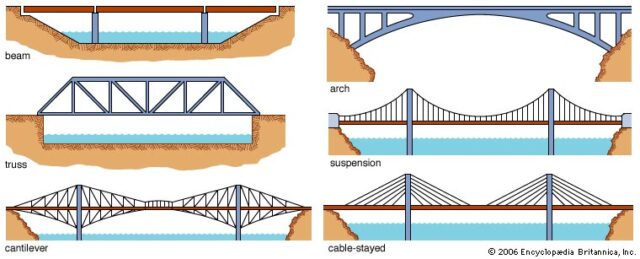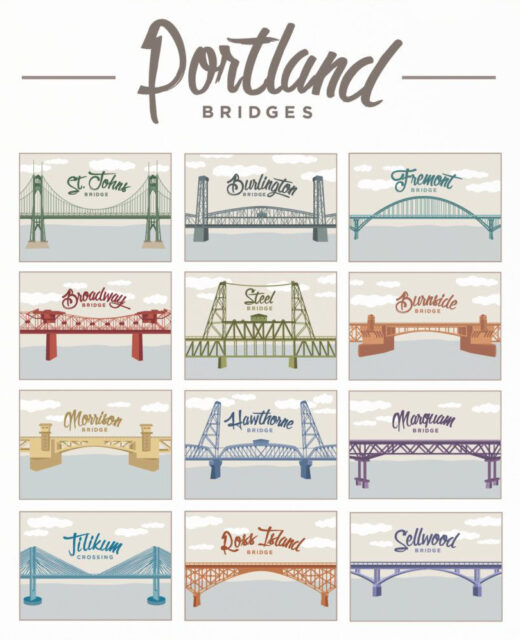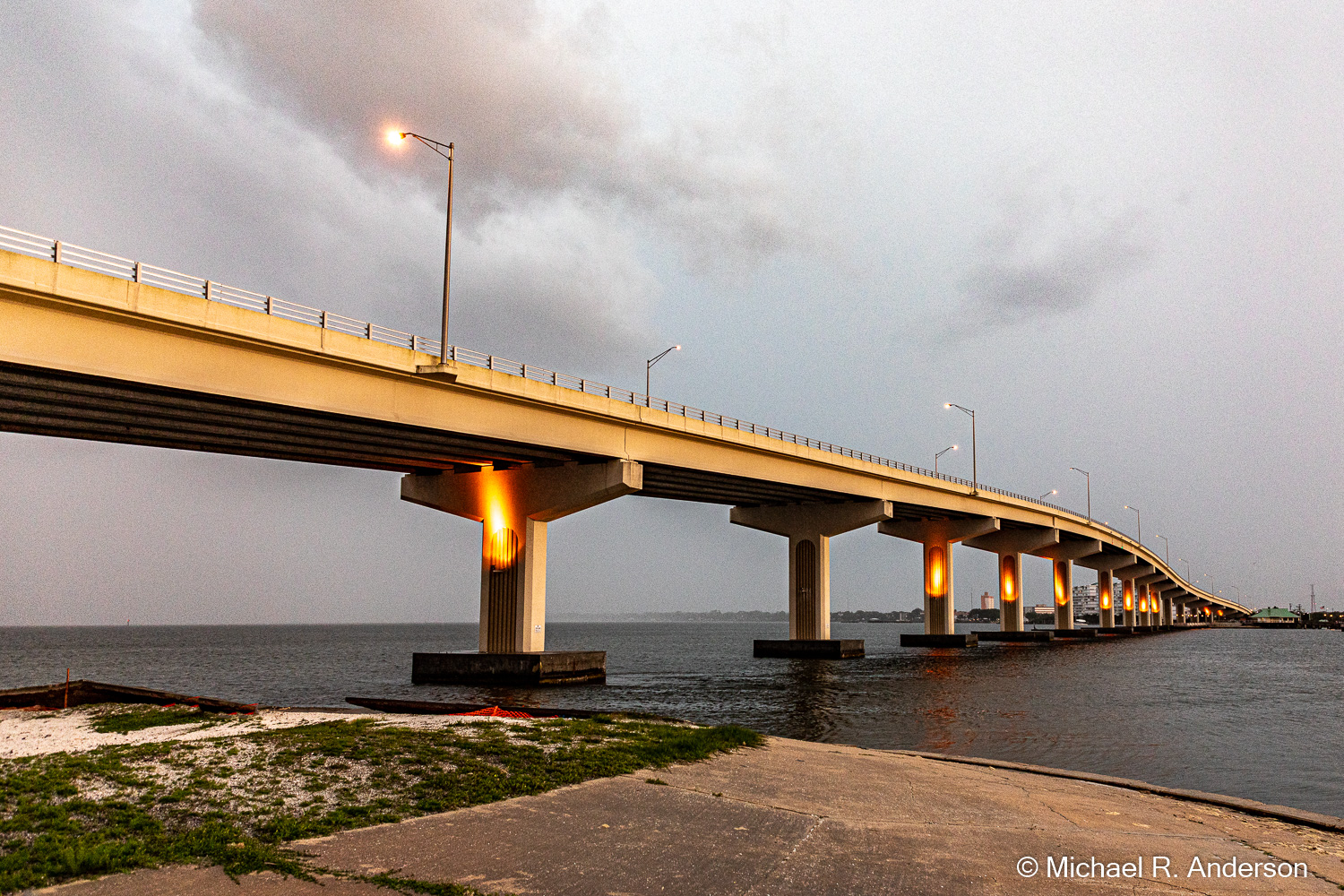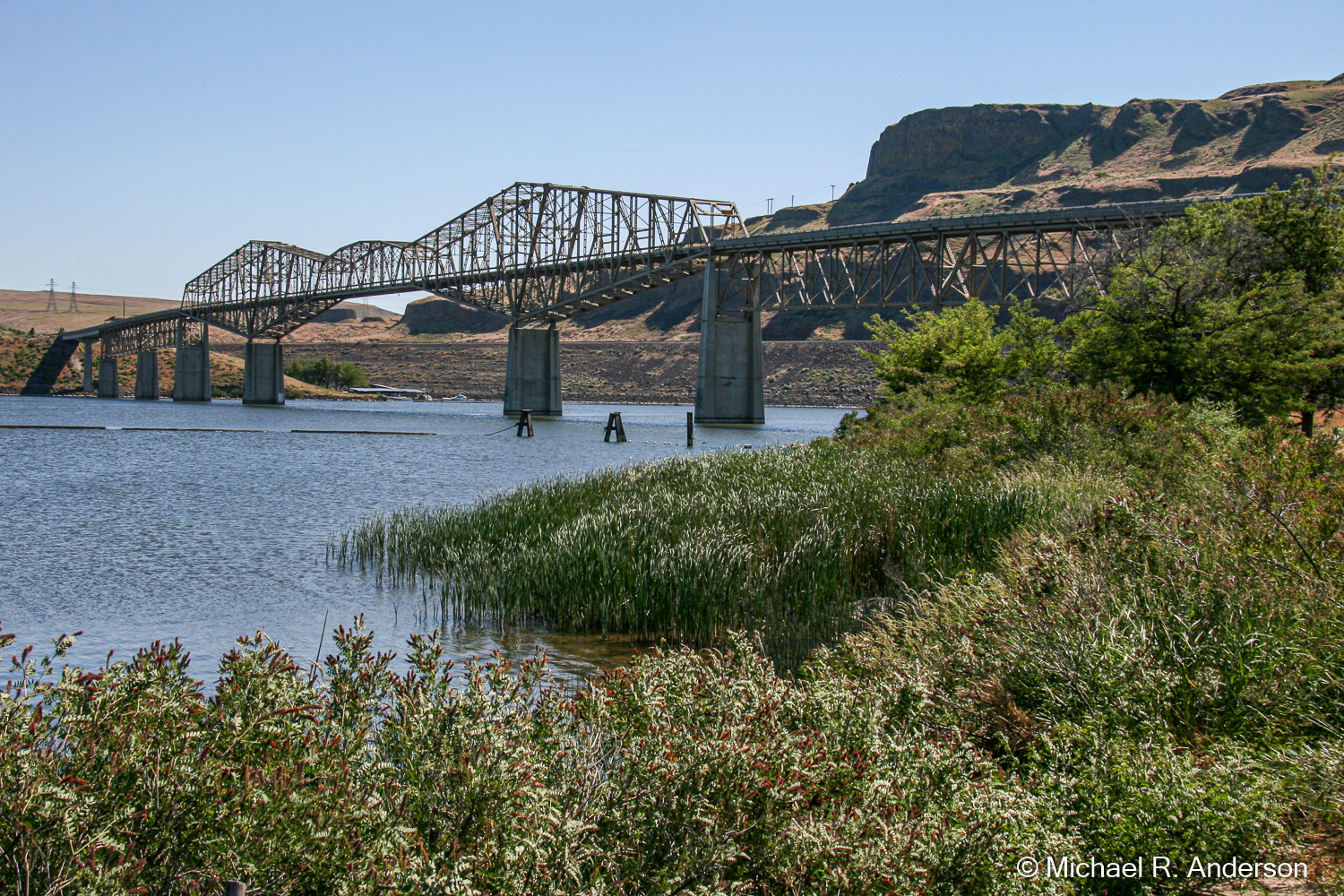While digging through some old photos, I came across a picture of a bridge. It’s the Astoria–Megler Bridge, which crosses the Columbia River and connects the states of Oregon and Washington. We crossed it quite a few times in our 25 years in Portland, Oregon. It can be very exciting to drive over this bridge when there’s a strong wind sweeping down the river. Out of curiosity, I searched my digital files and was surprised to find 479 images to which I had assigned the keyword “bridges.” Obviously, they’re not pictures of 479 different bridges. It’s just that I’m one of those photographers who likes to work a scene.

Responding to my inner nerd, I wondered what type of bridge this is and how many different types of bridges there are. After a brief discussion with Professor Google, I learned that engineers define six main types of bridges: arch, beam, cable-stayed, cantilever, suspension and truss, as shown in the illustration below from thinglink.com (which they apparently borrowed from Encyclopedia Britannica, Inc.)

Feeling that I was now fully educated about bridge structures, I looked back at my photo and decided that the Astoria-Megler Bridge is a … um … uh … I don’t know what it is! It doesn’t look like any of the six. So, I searched for information about this bridge and learned that it’s a 4.1 mile long steel cantilever-through-truss bridge. That must be a hybrid, like part cantilever and part truss, but I’ll just say it’s some kind of a truss bridge. Figuring out this bridge-type thing might not be as easy as I thought!
Unable to leave well enough alone, I wondered if I had examples of the five remaining types of bridge in the remaining 478 photos? I thought it would be easier to start my search with something more obvious than Astoria-Megler. What about the Golden Gate Bridge? Without even looking at the illustration I knew it was a suspension bridge. That was much easier and, fortunately, it is one of the six. Counting the Astoria-Megler as a truss bridge, that’s two bridge types down and four to go.

Thinking back about our years in Portland, Oregon, I remembered that the city’s known as “Bridgetown” — not to be confused with “Bridgerton” on PBS — because it has twelve bridges within the city limits that cross the Willamette River to connect the east and west sides of town. You can find a Bridgetown Church, Beerhouse, Lofts, Dental, Automotive, Barber Society and Optometrists in Portland.

Every summer Portland celebrates its bridges with the annual Providence Bridge Pedal. Participants can choose a number of events ranging from a 5-mile two-bridge walk to a 23-mile bike ride crossing nine of the bridges. We participated in this event one year and enjoyed the 5-mile walk around town crossing the Freemont and Steel bridges. The photo below was taken on the approach to the Freemont Bridge, which you can easily identify by the flags on top. It looks kind of archy to me but I wasn’t sure so I looked it up. It’s a steel tied-arch bridge and it happens to be the longest bridge in Oregon and the second longest tied-arch bridge in the world. Tied-arch must be another hybrid bridge structure.

Looking through my photos, I quickly found other bridge images that more easily fit the arch category. These include the Oregon Trunk Railroad Bridge, which spans the Crooked River in Deschutes County, Oregon; the Multnomah Falls Bridge in the Columbia River Gorge, Oregon; and a bridge over the Keizersgracht in Amsterdam. So, I can safely check “arch” off of my list. Three down, three to go.
Beam bridges look like they would be very easy to identify. I suspect that the A. Max Brewer Bridge over the Indian River in Titusville, Florida, fits in that category. Four down, two to go.

I had never heard the term “cable-stayed bridge” before, but the illustration brought something to mind. After searching I found two of these bridges in my photos. One is a very unique pedestrian bridge designed by Santiago Calatrava. It’s the Sundial Bridge at Turtle Bay and it crosses the Sacramento River in Redding, California. It may be hard to believe, but this bridge is designed to be one of the largest working sundials in the world. According to the Turtle Bay website, the “sundial shadow traces such a large arc that it can record only four hours a day, from 11am – 3pm. It is not accurate in winter because the shadow is too far into the arboretum to be seen. The shadow, when visible, moves about one foot per minute, so you can readily see it move.”
Since it’s the whole point of this post, I should mention that the Sundial Bridge is called a cantilever spar cable-stayed bridge. That sounds like another hybrid, but I’ll use it to check “cable-stayed” off the list. It was difficult for me to get a photograph that shows the entire structure so, the first photo in the group below is from the Turtle Bay website. And, by the way, I didn’t know about it’s sundial nature when we were in Redding so I made no attempt to sync my watch with the sun.
The Sundial Bridge is for pedestrians and bikes, but I also found a highway bridge that is cable-stayed; it’s the Ed Hendler Bridge, which crosses the Columbia River between Kenniwick and Pasco, Washington. The day that we drove over this bridge the weather was not very good; I think the meteorological term is “yucky.”
OK, that’s five out of six. The remaining bridge type is cantilever. I really had to search for this photo and it might be the only one I have of this type of bridge. Since I don’t know the name of the bridge, I couldn’t look it up, but it looks close enough for me to check “cantilever” off of the list. That’s all six! In case you’re wondering, this picture was taken on a drive from Portland out to Hooper, Washington (population 55) to visit a friend who owns a ranch out there. That’s the wild west!

I have to stop now and try to remember what I was really looking for when I ran across that photo of the Astoria-Megler Bridge. If you made it this far and you’re not totally bored, maybe you’ll enjoy a few more images of bridges. However, I won’t tell you what kind they are!